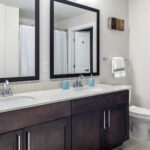Pipettes are indispensable tools in laboratories, facilitating the precise measurement and transfer of liquids. They come in various designs and configurations to accommodate diverse applications, ranging from basic research to clinical diagnostics. Understanding the principles of pipette operation is crucial for effective utilization and accurate results.
Types of Pipettes:
a. Volumetric Pipettes: Ideal for measuring fixed volumes of liquids with high precision.
b. Micropipettes: Designed for measuring small volumes accurately, typically ranging from microliters to milliliters.
c. Pasteur Pipettes: Simple glass tubes used for transferring small volumes of liquids.
d. Serological Pipettes: Employed in the precise measurement and transfer of liquids in laboratory settings.
e. Electronic Pipettes: Incorporate electronic components for enhanced precision and ease of use.
Factors to Consider When Choosing a Pipette:
a. Volume Range: Select a pipette that covers the desired volume range for your applications.
b. Accuracy and Precision: Ensure the pipette offers the required level of accuracy and precision for reliable results.
c. Compatibility: Consider the compatibility of the pipette with the liquids being dispensed and the associated containers.
d. Ease of Use: Opt for a pipette with user-friendly features, such as ergonomic design and intuitive operation.
e. Durability: Choose a pipette constructed from robust materials to withstand the rigors of laboratory use.
f. Calibration and Maintenance Requirements: Evaluate the calibration and maintenance needs of the pipette measurement to ensure long-term performance and accuracy.
Ergonomics and User Comfort:
Ergonomic design plays a significant role in user comfort and productivity during pipetting tasks. Features such as lightweight construction, ergonomic grips, and intuitive controls can minimize user fatigue and enhance efficiency. Prioritize pipettes that prioritize user comfort to promote ergonomic pipetting practices and reduce the risk of repetitive strain injuries.
Maintenance and Calibration:
Regular maintenance and calibration are essential for ensuring the accuracy and reliability of pipettes. Establish a comprehensive maintenance schedule that includes cleaning, lubrication, and calibration procedures. Adhere to manufacturer recommendations and guidelines to prolong the lifespan of your pipettes and maintain measurement integrity. Consider investing in pipettes with user-friendly calibration features or opt for electronic pipettes with built-in calibration functions for added convenience.
Conclusion:
In conclusion, selecting the right pipette for your measurement needs is a crucial decision that can significantly impact the accuracy and reliability of your laboratory results. By understanding the various types of pipettes available and considering factors such as volume range, accuracy, ergonomics, and maintenance requirements, you can make an informed choice that aligns with your specific applications. At certifiedmtp.com, we understand the importance of reliable laboratory equipment, including pipettes, in ensuring accurate and reproducible results. Explore our comprehensive selection of materials testing equipment and lab supplies to meet all your laboratory needs with confidence.
FAQs:
Q1. What is the difference between precision and accuracy in pipetting?
A1. Precision refers to the consistency of measurements, while accuracy denotes how close the measured values are to the true value. In pipetting, precision ensures consistent results across multiple measurements, while accuracy ensures the correctness of each individual measurement.
Q2. Can electronic pipettes improve pipetting accuracy?
A2. Electronic pipettes utilize advanced technology to enhance accuracy and precision, making them ideal for applications requiring high levels of measurement reliability. Additionally, electronic pipettes often feature built-in calibration functions, further optimizing performance and accuracy.
Q3. How often should pipettes be calibrated?
A3. Pipettes should be calibrated at regular intervals as per manufacturer recommendations and laboratory standards. The frequency of calibration depends on factors such as usage frequency, environmental conditions, and regulatory requirements. Regular calibration ensures the continued accuracy and reliability of pipette measurements.





